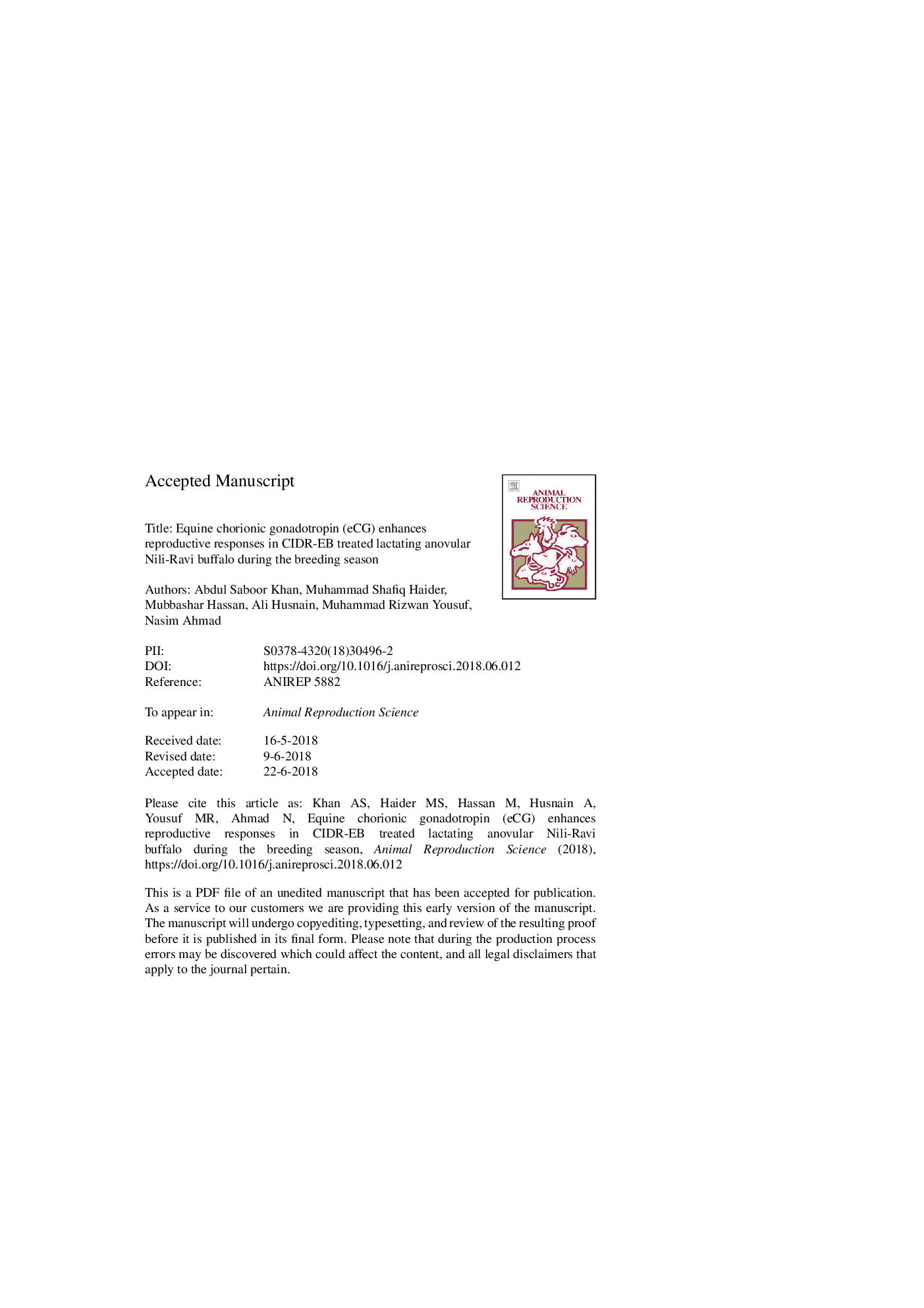| Article ID | Journal | Published Year | Pages | File Type |
|---|---|---|---|---|
| 8949561 | Animal Reproduction Science | 2018 | 23 Pages |
Abstract
The objective of this study was to evaluate the effect of equine chorionic gonadotropin (eCG) on the estrous response, ovulatory follicle development, ovulation rate, corpus luteum (CL) diameter, concentrations of progesterone (P4) and pregnancy per AI (P/AI) in CIDR-EB treated lactating anovular Nili-Ravi buffalo during the breeding season. Buffalo (n = 87), 60 to 200 Days postpartum were treated with CIDR at a random stage of the estrous cycle (Day 0) and assigned to two groups; with eCG (+eCG; nâ¯=â¯44), or without eCG (-eCG; nâ¯=â¯43). In both groups, each animal received 2 and 1â¯mg estradiol benzoate (EB) on Day 0 and then on Day 8, respectively. On Day 6, eCG and PGF2α were administered. On Day 7, CIDR were removed and FTAI was performed at 48 and 60â¯h later and pregnancy was diagnosed 35 Days post AI. The results revealed that eCG treatment increased (Pâ¯<⯠0.05) the CL diameter on 15, 18, and 21 after the ovulation that resulted from imposing the estrous synchronization protocol than when eCG was not administered. Similarly, treatment with eCG resulted in an increased (Pâ¯<⯠0.05) mean concentration of P4 as compared with animals not treated with eCG on Days 18 and 21 after the ovulation that occurred subsequent to imposing the estrous synchronization protocol. The ovulation rate was greater in eCG-treated buffalo as compared with those not treated with eCG (93% compared with 74%, respectively; P < 0.05). The P/AI was greater in buffalo treated with eCG than those not treated with eCG (56% compared with 31%, respectively; P < 0.05). In conclusion, the addition of eCG along with EB and P4 based treatments enhanced the estrous response, follicular and luteal function, ovulation rate, concentrations of P4, and P/AI in lactating anovular Nili-Ravi buffalo.
Keywords
Related Topics
Life Sciences
Agricultural and Biological Sciences
Animal Science and Zoology
Authors
Abdul Saboor Khan, Muhammad Shafiq Haider, Mubbashar Hassan, Ali Husnain, Muhammad Rizwan Yousuf, Nasim Ahmad,
